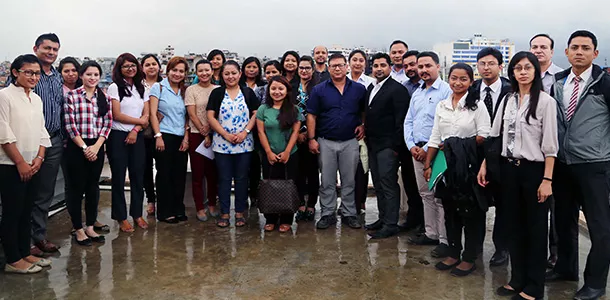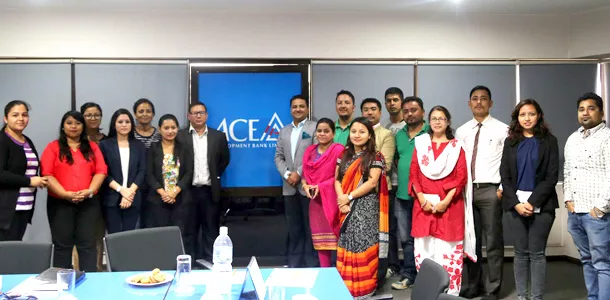
68th HR Kurakani discussed on Competency Mapping in an Organization
Category: HR Kurakani | Date: March 30, 2018, 12:30 p.m. | Total Views: 3006
Competency mapping being one of the most complex challenges faced by HR Professionals today, 68th HR Kurakani organized at Orchid Hotel hosted by MAW involved discussion on “Competency Mapping in an organization – How and Why?” on March 28th 2018, among 39 participants.
Ms. Nibha Shakya, HR Manager at Real Solutions Pvt. Ltd. had welcomed all participants with brief summary of HR Kurakani, followed by presentation from Mr. YP Shrestha, GM- HR of MAW Enterprises. The presentation highlighted the insight of competency mapping where HR practitioner from different organization shared their views.
“Competency is the characteristic of job holder that lead to the demonstration of skills and abilities, which result in effective performance within an organization area” said Mr. Shrestha introducing the Competency iceberg model. In this model, technical competencies are the one at the tip, portion above the water surface that includes knowledge and skills. Whereas the behavioural competencies are below the waterline, that are difficult to access which includes mainly viewpoint of value, self-image, character/personality and motives and so on.
In the discussion, HR practitioner argued that it is very difficult to measure the behaviour competencies of individuals. Technical competencies can be somehow figured out from their resume and profiles. They believed that if it is possible to align employee’s competency profiles with the strategic plans during recruitment, it can offer tremendous value to fit right person in the right job. Understanding the competencies would aid in in selection, retention, training, succession planning and performance management system agreed the professionals.
HR from diverse organization participating in the session shared different methods they have been practicing to measure competencies. Few common practices they shared were- annual appraisal, 360 degree feedback questionnaire, and analysis of key performance indicators (KPIs) and one-to-one meeting with line managers.
Mapping can be performed on different levels of the organization and in varying parameters and thus the parameters need to be designed as appropriate for the nature of job and organization. The role description or job specification itself defines the required competencies. There were different exercise shown in the presentation by Mr. Shrestha for assessing behavioural and functional competency such as Competency based Interview, Psychometric test, Presentation, Group Based Test, Role play, in tray exercise and meet and greet session.
In the Kurakani, professionals argued that “Competence should be measured throughout the employment relationship, but don’t forget to include the very beginning of that journey.” Overall, interview question can be framed to access competency beforehand which will help in hiring the right talent through better filtering said the professionals.
HR professionals emphasized that competency mapping creates a level of objectivity and encourages better interaction between employees and managers. This not only motivates them to work better in their role, but also helps them get competency-based training in respective domains to perfect their skills and move up the ladder in the organization. Furthermore, they added the necessity and the support of the top management is must for the effectiveness of the same.
Using a competency mapping design, the key performance areas can be improved by gaining an insight into the gap between the actual and the desired results. HR managers use competency mapping to identify training needs that ultimately increase the productivity and performance of employees and the efficiency, effectiveness and competitive nature of the business as a whole. On the other hand, they said competency mapping may also be used for internal mobility to determine whether an employee is fit for another job role in the same organization as well.
In conclusion, HR professionals and practitioner emphasized competency mapping as a common practice essential for productivity and performance excellence. Also employees in the organisation are more concerned about their advancement in their career. In addition to the competency consideration employee career should also be considered by the HR managers in the individual planning level.



